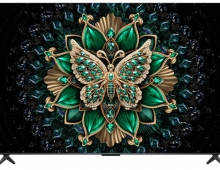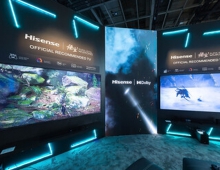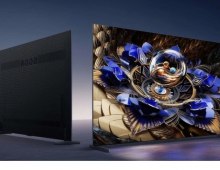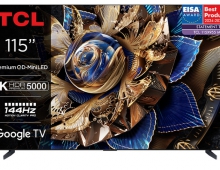
Chinese TV Makers Increase Their Global Market Share
Chinese and Japanese TV manufacturers have showed a substantial growth in the global TV market and mainly in the North American market.
Market research firm IHS Markit estimates that TCL sold 4.53 million TVs and posted a market share of 8.3% in the global TV market in the third quarter of this year to come in third behind Samsung Electronics and LG Electronics.
Hisense increased its market share to 6.3% and came in fourth. Sony's share rebounded to 5.9% and Sharp, which was recently acquired by Taiwan's Hon Hai, also raised its market share by selling more than two million TVs in the third quarter of this year.
TCL and Hisense have both raised their shares in the North American market from 4% at best to approximately 7% between last year and the third quarter of this year. Sony also increased its share by almost three percentage points by releasing ultra-slim OLED TVs in quantity.
"Chinese TV manufacturers' shares in the North American and European markets were very low until last year," said Samsung Securities research analyst Lee Jong-wook, adding, "However, TCL boosted its sales volume in the North American market with smart TVs developed in cooperation with Roku, a video streaming company, and Hisense is constantly increasing its share based on its trademark license agreement with the Sharp brand."
In the third quarter, Samsung Electronics' TV sales volume fell by more than 1.36 million units from a year ago and its market share fell to about 18%. During the first three quarters of this year, the volume decreased by approximately 2.8 million units year on year to 29.5 million or so. This year, Samsung Electronics' annual TV sales volume is estimated to be less than 45 million units for the first time since 2009. This could be attributed to the fact that Sharp stopped supplying its TV panels to Samsung Electronics late last year. It is estimated that Sharp had been supplying about 3 million LCD panels to Samsung. The situation has forced Samsung to likely to adopt liquid-crystal display panels manufactured by rival LG Display in its TVs that are slated for launch early next year.
Samsung Electronics is currently reducing the production of inexpensive 40-inch or less TVs by at least 10% while increasing the production of 75-inch and 80-inch products. This is to focus on profitability rather than its share in the market.
LG Electronics, in the meantime, is increasing its presence in the market with ultra-slim OLED TVs.
OLED TV dominates high-end market, but 8K TV may be an opportunity for QLED
OLED TV and QLED TV have been competing for years, but OLED TV is expected to remain its remarkable dominance in high-end TV market in 2018, says WitsView, a division of TrendForce. More brands are expected to enter OLED TV market in 2018 with a growing field rate.
Despite of OLED's lifespan problems including color decay of organic material and burn-in issue, major TV brands are still interested in research and development of OLED which can be thinner with potentials in constant optimization of color saturation and contrast, while the development of LCD is approaching its limit.
QLED TV makers have been advocating its features of better color saturation and no lifespan problems, however, the self-emitting QD display has not yet met the commercial market standards because its light output is difficult to last for a long time due to the low external quantum efficiency. Therefore, in short term, QLED advocates will still use QD backlight products to compete with their rivals. In QD backlight products, the backlight system involves a quantum dot enhancement film (QDEF). Quantum dots are activated by the light from LED to create more highly saturated colors. However, the backlight system, a necessary component of TV, will make it thicker, which is less competitive than OLED. So the new generation of QLED TV will probably use glass light guide plate as a solution for thinner TV.
In addition, pricing is also a big problem for QLED TV this year. Taking the 55-inch 4K TV as an example, the retail price difference between OLED TVs and QLED TVs is only about $100. However, with the promotional efforts by major TV makers like LG and SONY, OLED TV has become a representation of high-end TV in consumers' perception in recent years. So too high pricing of QLED TV may reduce the consumers' purchase intention.
WitsView estimates that, QD CF and QD self-emitting displays, a new generation of display technologies, which QLED advocates are expecting, will not enter mass production until 2020, at the earliest. So far, however, the highest possible resolution of OLED can only reach 4K due to technical limitations, while QD backlight has no restrictions regarding resolution. Therefore, for QLED TV brands, 8K TV may be a breakthrough opportunity for them to regain their competitiveness in high-end TV market.





















